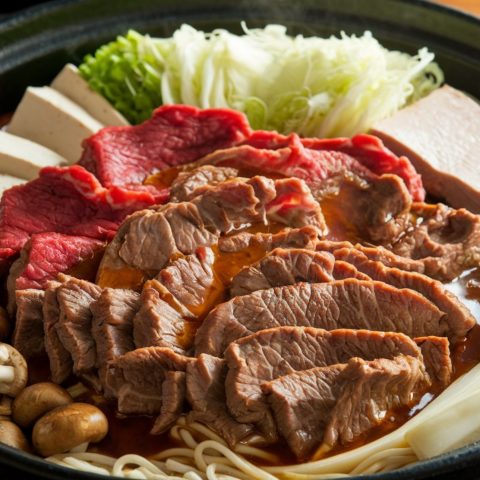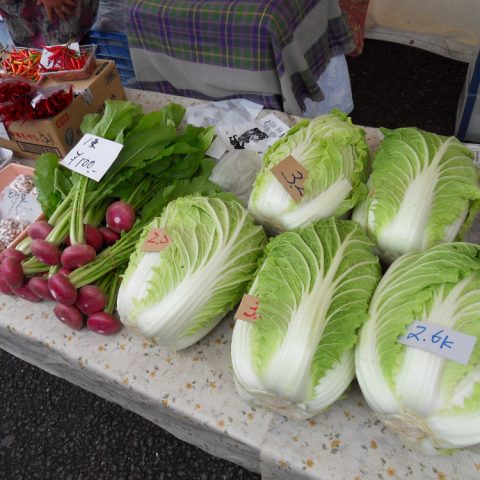
Vegetarianism in Japan
Japan has much excitement, richness and diversity to offer its visitor– pristine nature, a fascinating culture, and food of all textures and tastes. Known to be somewhat a tricky place for vegetarians to navigate, there are now numerous apps to facilitate your experience and search for some great vegan and vegetarian restaurants. Nevertheless, it is curious how unfamiliar most Japanese people are with vegetarian foods given that the country was primarily vegetarian a couple of centuries ago.
Until the18th century, plant-based agriculture was preferred to livestock rearing. This combined with the influence of Buddhism and Shintoism meant that most of the country harboured a vegetarian friendly diet. Emperors regularly issued meat bans and for a while, plant-based diets thrived.
It was only with the arrival of the Dutch, and then later the Americans after World War II, that meat consumption saw a large increase which continues to this day. Despite these changes, there is one ancient plant-based cuisine that is still in practice today after over eight hundred years.

Japan’s Buddhist Vegetarian Cuisine
Following the spread of Buddhism in Japan, by the 13th century, there was a sense of dissatisfaction with different sects such as Tendai Buddhism. Zen Buddhism started to take shape and gain popularity. With this new form of Buddhism came the integration of daily life into the lifestyle of a monk. At this time, Dogen Zenji, a Zen master, wrote the instructions for creating hearty vegetarian food in Tenzo Kyokun. Why should preparing and eating food not be the same as meditating? This new concept of eating came to be called Shojin Ryori.
To understand what was so special about this concept, let’s break down the word in Japanese. Shojin Ryori is written in Japanese as ‘精進料理’- Sho (精) – refined; shin (進) – advance; ryori (料理) – cuisine. When combined, Shojin Ryori (精進料理) can be said to mean cuisine that advances enlightenment. When making shojin ryori, it is important to keep an attitude that inculcates three qualities: Daishin (broad and open mind), Kishin (joyful working attitude), Roushin (always considering the other person’s feelings).
What are the ingredients and methods used to prepare Shojin Ryori?
Those preparing the food must pay attention to colours, flavours and methods, all in sets of five: flavours (salty, sour, bitter, spicy, sweet), colours (green, yellow, red, black, white), and cooking methods (raw, boiled, baked, fried, steamed). It is also essential to try and minimize waste – for instance, scraps are used as pickles or stock, and some are fried to make tempura.
Not only does shojin ryori exclude meat and fish, but it also excludes the use of strong-flavoured raw ingredients like garlic or onion. This is to avoid strong flavours that may lead to the monks developing a sense of craving for good-tasting food, or having their meditation interrupted.
The base of most Japanese cuisine is a broth called dashi which is typically made from dried kelp or fish flakes like bonito. In shojin ryori, these ingredients are replaced with vegetarian ones, so the dashi is made with dried kelp, dried mushroom, vegetables, grains or beans. Flavouring like sesame oil, soy sauce, mirin (sweet rice wine) and miso (fermented bean paste) are also used but in subtle proportions.
With the four seasons of summer, autumn, winter and spring having clear distinctions in Japan, there is an opportunity to use fresh and affordable seasonal ingredients. It is common to use fresh vegetables like cucumbers in the summer, sweet potatoes in the autumn, root vegetables in the winter for warmth, and tender shoots or other flower-based foods in the spring. Some ingredients like tofu, which offer protein, are used all year long.

Signature Shojin Ryori Dishes
Whilst the dishes may change based on the season and location, there are some common dishes in every shojin ryori meal. They will all likely include soup, rice, sides and pickles. A common dish to start is goma-dofu, tofu with sesame paste and wasabi (horseradish) on top. Though simple in appearance, this dish is actually quite hard to prepare at home if done in the same manner as a monk would prepare it. This is because the sesame can take a while to grind to the level of fineness that the dish requires – a good example of the discipline that making shojin ryori demands.
Another favourite is nasu dengaku, grilled eggplant with glazed miso. Many who don’t normally like eggplant will change their mind after trying this flavour-laden dish.

Rules of Shojin Ryori
There are several rules to follow when eating shojin ryori. Most restaurants will have staff or signs that explain some of the basics like putting the lid on the cup and placing it to the far right of your tray when a dish is finished so that the staff will know to bring in the next dish.
Where to Eat Shojin Ryori in Japan
With its history and tradition associated with Zen Buddhism, Kyoto is possibly the best place to enjoy shojin ryori. Tenryu-ji Temple, Daitoku-ji Ikkyu, Yoshuji in Kurama all have great shojin ryori menus. Other places to enjoy shojin ryori include special restaurants in bigger cities like Tokyo (e.g. Itosho).

The menus normally start at mid-level so shojin ryori is great to celebrate a special occasion.
Other considerations
Some places will require reservations to be made for more than two guests, so it is worth contacting the restaurant in advance of your visit. The food will be 100% vegetarian, but some restaurants have recently started to use eggs or milk. If you are vegan or have any dietary restrictions or allergies, consult the staff prior to your meal.
Experiencing Shojin Ryori
Famous Buddhist temples offer shojin ryori meals in the setting of their beautiful gardens and grounds. At Tenryu Ji temple in Arashiyama in Kyoto, Shigetsu restaurant offers a large room facing a quiet garden where you can enjoy the varying texture and subtleties of shojin ryori. The temple grounds can get quite busy, so the meal offers some respite. In this restaurant, guests are often seated together in a big hall. It can be very enjoyable to see how different people react to the many kinds of dishes that are offered. Much care is given to the order in which the dishes are brought, their arrangement and their preparation. It is only natural to slow down and think about the ingredients that went into each of the many dishes on the tray. Perhaps that was the intention of Dogen Zenji when he conceptualized shojin ryori all those hundreds of years ago.



